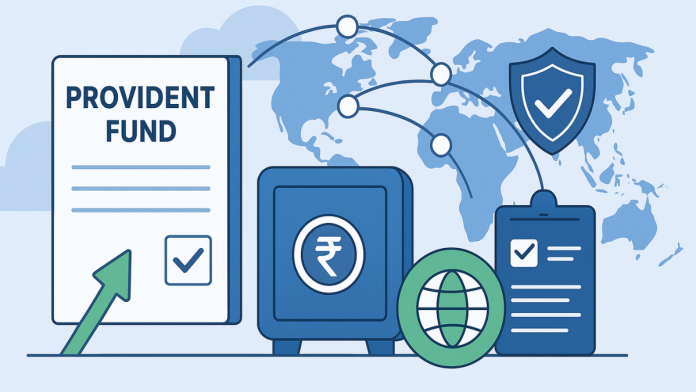Many workers travel across borders to work in India. These international workers must follow India’s social security rules. A key part is the Employees’ Provident Fund Organisation (EPFO), which manages a savings plan called the provident fund. This plan helps workers save money for their future. Global HR teams, payroll managers, and expat advisors often find these rules confusing. Understanding them is crucial to avoid mistakes with money or laws.
International workers are people from other countries working for Indian companies. Unlike Indian workers, who join the provident fund only if they earn below a certain amount, international workers must join regardless of their salary. Both the worker and employer contribute 12 percent of the worker’s basic pay each month. This money grows over time and supports workers when they retire.
Coverage Under India’s Social Security Laws
India’s social security laws protect workers through the Employees’ Provident Funds and Miscellaneous Provisions Act of 1952. This law applies to businesses with 20 or more employees. Since 2008, international workers in India must follow these rules, no matter how long they stay. They get a Universal Account Number (UAN) to track their savings.
Federal court sentences 6 in forced labor case involving child victims and cult group
Part of the contributions goes to the Employees’ Pension Scheme (EPS), which provides monthly payments after age 58. International workers need to provide passport details and, initially, an Indian bank account. However, rules for accessing funds have become more flexible, especially for workers from certain countries.
Social Security Agreements and SSA Countries
India has Social Security Agreements (SSAs) with countries like Austria, Australia, Belgium, Brazil, Canada, Czech Republic, Denmark, Finland, France, Germany, Hungary, Japan, Luxembourg, Netherlands, Norway, Portugal, South Korea, Sweden, and Switzerland. These agreements prevent workers from paying social security in two countries at once.
With an SSA, workers can get a Certificate of Coverage from their home country. This certificate shows they are covered there, so they don’t need to contribute to India’s provident fund for a period, usually 3 to 5 years. Without this certificate, they must pay into the EPFO. SSAs also allow “totalization,” where years worked in both countries count toward benefits.
Compliance Rules for International Workers
Compliance means following the rules correctly. Employers must register international workers with the EPFO and get them a UAN. If the worker is from an SSA country and has a Certificate of Coverage, they may be exempt from contributing. Otherwise, both the worker and employer must pay 12 percent of the salary, with part going to the pension scheme.
📜 One clause away from collapse — how startups are unknowingly breaking labour laws
Unlike Indian workers, who can opt out if they earn over 15,000 rupees monthly, international workers must contribute regardless of income. HR teams and payroll managers ensure payments are correct and details are updated, especially when a worker leaves. Misunderstandings, like thinking high earners are exempt, can lead to errors.
Withdrawal Rights Under SSA Treaties
When international workers leave India, they may want to withdraw their provident fund savings. For workers from SSA countries, this is straightforward. They can take out all their money after their job ends, without waiting until age 58. They use forms like Form 19 for the provident fund and Form 10C for the pension part. Now, funds can be sent directly to a foreign bank account, making it easier.
If the worker has less than 10 years of service, they can get a lump-sum pension payment, but this applies only to SSA countries. For non-SSA countries, workers may need to wait until age 58 to access funds. The process involves keeping the UAN active and submitting forms online or at an EPFO office, which may take 15 to 20 days. Taxes may apply on early withdrawals, depending on the situation.


